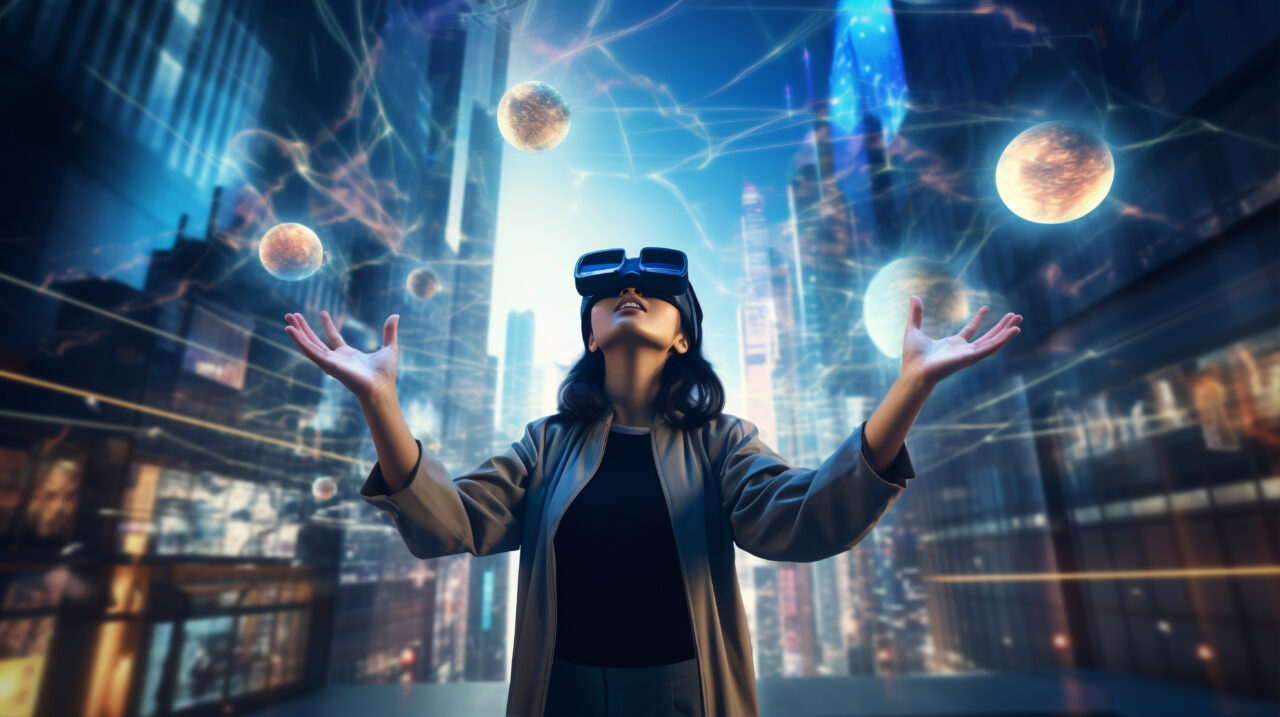Immersive Infrastructures enable AI to bridge digital twins with real-world living environments, delivering new levels of operational insight and human-centric design.
Immersive Infrastructures are redefining how we merge the physical world with its digital counterpart, enabling AI to bridge digital twins with real-world living environments. As cities, industrial sites, and campuses evolve, the integration of immersive infrastructures powered by advanced AI becomes crucial to creating intelligent, responsive and human-centric systems.
What Are Immersive Infrastructures?
Immersive Infrastructures refer to complex systems where physical assets (buildings, utilities, urban spaces) and their digital twins virtual replicas in real time are connected via AI, sensors, and data streams. These infrastructures do not simply model assets; they enable continuous synchronization between the physical and digital realms, supporting dynamic simulation, optimization and control.
In these systems, AI algorithms ingest sensor feeds and operational data, update the digital twin model, and then feed insights or control signals back into the physical infrastructure. Thus, the infrastructure becomes “immersive” it actively senses, reacts and learns.
Why Immersive Infrastructures Matter
With growing urban populations, resource constraints, and demands for sustainability, infrastructure must become smarter and more efficient. Immersive Infrastructures provide:
- Real-time situational awareness: Digital twins mirror the live state of assets, thanks to IoT sensors, edge computing and cloud platforms.
- Predictive maintenance: AI models detect anomalies, predict failures and schedule interventions before breakdowns.
- Operational optimization: Systems continually optimize energy, water, transport flows or facility layouts based on live data.
- Human-centric design: Immersive infrastructures allow simulations of human interactions, accessibility, comfort and safety in built environments.
- Sustainability and resilience: By optimizing resource use and simulating disruption scenarios, infrastructure gains resilience.
How AI Drives Immersive Infrastructures
AI is the glue connecting digital twins and physical infrastructure in immersive ecosystems. Key technical components include:
Data ingestion and fusion
Sensors (e.g., building automation, structural health monitors, environmental sensors) feed raw data into data lakes or streaming platforms. AI pipelines fuse heterogeneous data time-series, spatial, 3D geometry so that the digital twin reflects the physical world with high fidelity.
Model generation and update
Machine learning models and physics‐based simulations create or update digital twin models. For instance, a structural health twin may use finite element analysis combined with AI anomaly detection to model structural integrity in real time.
Insight generation
AI analytics (e.g., clustering, deep learning, reinforcement learning) process the digital twin to generate operational insights. For example, which section of a facility consumes most energy, or how pedestrian flows change in a plaza.
Closed‐loop control
Insights activate automated responses: HVAC systems adjusted, lighting dimmed, or drones dispatched for inspection. The loop closes when the effect is sensed and fed back into the digital twin, completing the immersive infrastructure cycle.
Key Use Cases of Immersive Infrastructures
1.Smart Cities
In a smart city scenario, immersive infrastructures monitor traffic flows, public utilities, and emergency services through a city‐scale digital twin. AI models predict congestion, optimize signal timing, or reroute traffic during events enhancing livability and sustainability.
2. Industrial Facilities
In manufacturing plants or oil & gas sites, immersive infrastructures link machinery, processes and maintenance systems. AI and digital twins help monitor equipment health, schedule maintenance, optimize production lines and prevent costly downtime.
3. Commercial Buildings and Campuses
On university or corporate campuses, immersive infrastructures can manage energy use, occupant comfort and space utilization. AI uses digital twin data to adjust HVAC, lighting and layouts dynamically based on occupancy and preferences.
4. Infrastructure Resilience
For critical infrastructure bridges, dams, power grids immersive infrastructures enable real‐time structural monitoring, failure simulation and automated interventions. AI models anticipate extreme weather effects or seismic activity and propose mitigations.
Challenges and Considerations for Adopting Immersive Infrastructures
While powerful, deploying immersive infrastructures comes with challenges:
- Data quality and integration: Sensors may have inconsistent data; combining legacy systems with new IoT is complex.
- Model fidelity: Digital twins must accurately represent physical phenomena; developing high‐fidelity models is resource‐intensive.
- Scalability and latency: Real‐time feedback loops require low latency and scalable compute, especially across city‐scale deployments.
- Cybersecurity and privacy: As infrastructure becomes connected, guarding against intrusion and protecting occupant privacy is critical.
- Human adoption and change management: Ensuring that facility managers, city planners and citizens trust and engage with the system is vital.
Best Practices for Implementing Immersive Infrastructures
- Define measurable objectives: Start with specific use cases (e.g., reduce energy consumption by X %) and design digital twin and AI workflows accordingly.
- Start small, scale gradually: Deploy in one building or zone; validate the digital twin, refine AI models, then expand.
- Ensure interoperability: Use open standards (e.g., IFC for building data, OPC UA for industrial) so digital twins integrate across assets.
- Focus on data governance: Establish clear policies for data collection, labeling, quality, privacy and access.
- Engage stakeholders: Ensure operations, maintenance, IT teams and end-users are trained and involved in the system’s lifecycle.
- Monitor and evolve: Continuously update AI models, sensors and twin geometry based on operational feedback and evolving infrastructure.
Conclusion
Immersive Infrastructures bring together the physical and digital worlds in a meaningful way where AI actively bridges digital twins with real-world living environments. As cities grow smarter, industrial systems become more autonomous, and buildings respond to human needs in real time, the convergence of AI, digital twins and immersive infrastructure is unlocking a new era of efficiency, responsiveness and human-centric design. Organizations that embrace this transformation will gain enhanced operational resilience, reduced costs and environments truly aligned with how people live and work.

